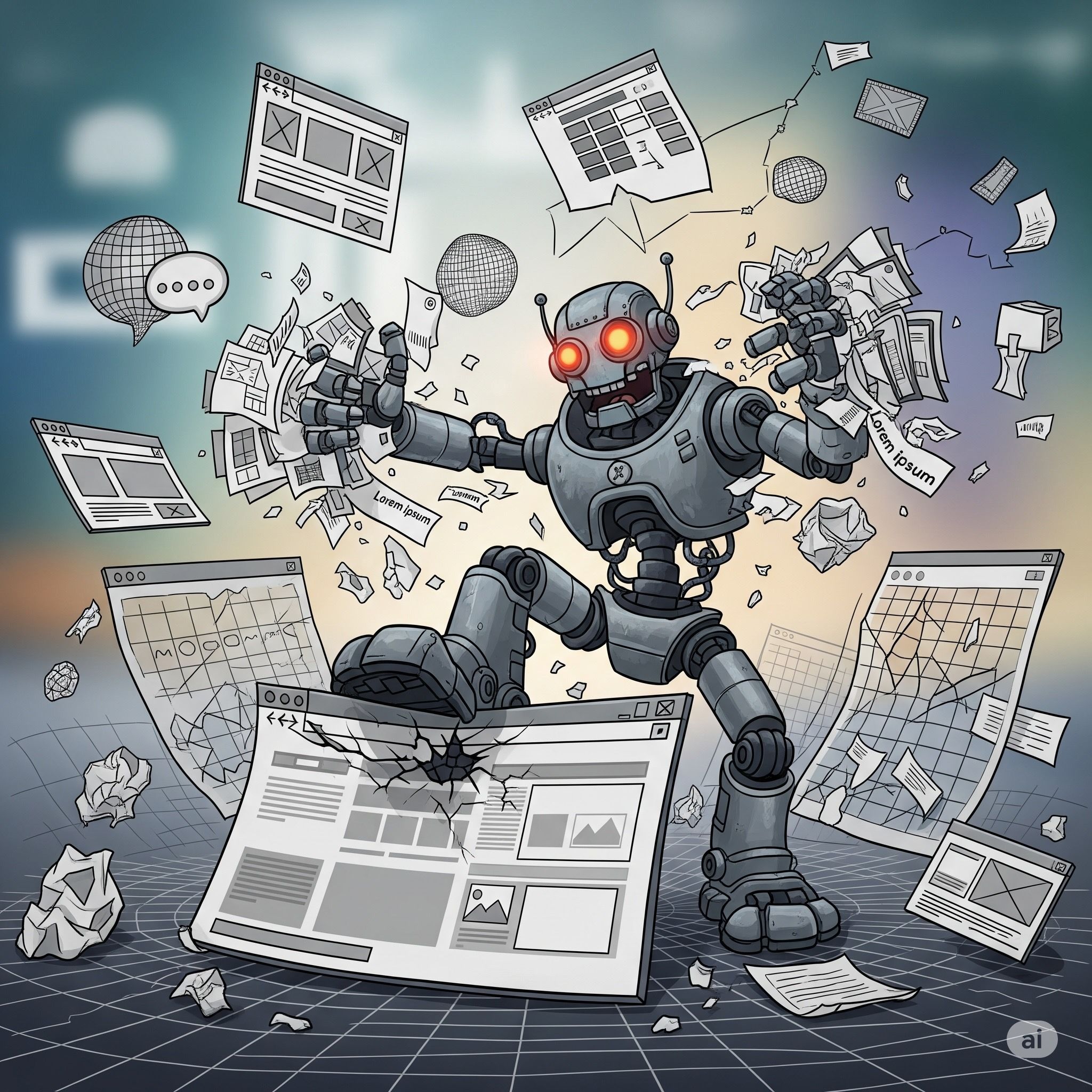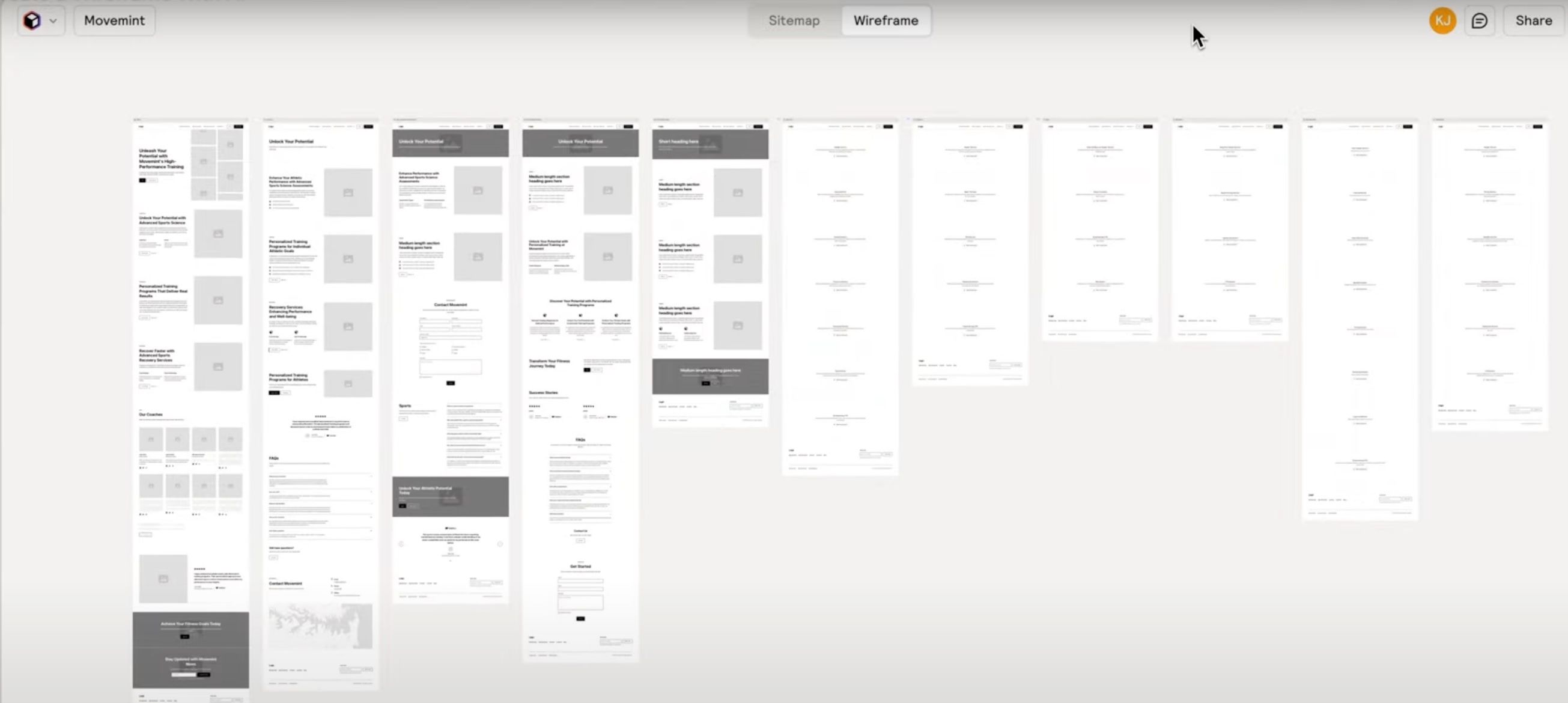AI kills Wireframes
By Philipp Marxen on

That's it! Wireframes are dead when you can prompt prototypes with AI.
Wireframes have been the essential starting point for digital creation. Here at Webstudiosi, many of us have some design background and Wireframes were the set first step in the process.
The reason why a low-fidelity sketch was a necessary first step on this way from idea to interactive product is cost. Wireframes and mockups were the non-negotiable things upon which websites were built. But what if this first step is no longer a necessity?
In the era of AI wireframes become a costly detour. This whole practice is on the verge of being thrown out. We are entering a time where prompting is the new frontier of design.
a shift that could even pose a risk to the current darling of the design world, Figma.
Cost Analysis of Wireframes, Mockups and Prototypes
Let's have a quick example. In the analogue world, a designer can quickly create wireframes for a three page website in maybe an hour or two. In the modern world, he would take similar time doing this on his laptop with a tool that allows to quickly flip things around. Then the customer gets involved and can voice an opinion.
Next step is creating mockups based on those pre-approved wireframes. These take longer but still, in maybe 2-3 hours mockups based on these wireframes are done for a simple website and again discussed with the customer.
Then follow the prototypes that might take another 4-5 hours and when the customer approves these, it is provided to developers to bring them online and make everything responsive.
This whole process might cost 10 designer hours which could be 100-1000 USD in total. If we assume the customer to make a decision 2 days, the whole process would then at least take 1-2 weeks. In practice the process takes longer than that and often the prototypes were far away from what could be used by developers.
Cost Analysis of Webstudio Inception
Designer-Sales team can work directly with clients and create 2-3 prototypes for some token costs before a meeting and create more with the client during the meeting. These prototypes will then be tweaked in that very meeting and it is all ready for development. At a fraction of the cost even if we assume that token for 10-20 USD were used.
Then the design to development hand over is the big open question but should already be better than the pure figma designs. It can show and is usually already perfectly responsive. But there is a need to understand how to cope with complicated classes, how to create slots and reusable components. The technical structuring in Webstudio might be initially an important task for web-developers until Inception can provide some simple suggestions what could be typically reusable (i.e. navbars) and what could be typical components (CTA button).
Looking back into the past
To understand where we are going, it’s crucial to appreciate where started. In a world of pen and paper, translating an abstract concept into a functional digital product was a monumental task. The process was linear and rigid: an idea was first sketched out in its most basic form (the wireframe), then given visual polish (the mockup), then made interactive (the prototype), and finally, handed off to developers to be painstakingly coded.
This multi-stage process was born of necessity. It was a way to manage complexity, to get stakeholder buy-in at each stage before investing significant time and resources in the next. Wireframes were the language of structure, a way for designers to communicate the layout and flow of a user interface without getting bogged down in the subjective realm of colors and fonts. They were a crucial communication tool, a bridge between the abstract and the concrete. But they were also a significant investment of time and energy, a bottleneck in a world that was beginning to demand ever-increasing speed and agility.
Figma is done...
This also has another potential victim: Figma as we know it. Design tools like Figma might be done for good. Or Figma also involves away from a pure design tool into a prototyping and website builder tool.
"Figma is essential for any inspiring designer." literally everybody in 2025
To its credit, Figma is not standing still. The company has been aggressively integrating AI into its platform. Features like "Figma Make" allow you to prompt designs. The goal is to evolve from a design tool into a full-stack product development platform. However, the question remains: can a company so deeply entrenched in the old way of working truly pivot to embrace the new? The challenge for Figma is not just to add AI features, but to fundamentally rethink the design process itself. If prompting becomes the primary mode of creation, and fine-tuning happens directly in the browser or in code, what role is left for a dedicated, high-fidelity design tool?

Relume Wireframes
Relume has an AI tool that quickly creates wireframes. And you can push individual sections up and down or add sections or delete others that are not useful. This can be done in just minutes.
Is that the future? It depends. In case you can inexpensively prototype entire websites, then you might even skip this step. At the moment, AI prompting for advanced designs is still expensive. If this wireframing could save 10 dollars per website and also focus on the important structure, then these AI-created wireframes have a future. The caveat: How to merge AI-wireframes with advanced design prompt-based prototyping.
"This development is scary for designers as they get a lot of work removed and inserted into AI. But at the same time, it means that the relationships we build with customers become way more important."
What to focus on?
"Most business websites are expensive mistakes. I see it constantly: companies spend $10k+ on a "modern" website, then wonder why it's not driving results. The problem isn't the design. It's the purpose" Erik Lens on X
The change in the workflow creates enormous opportunity: customer, designers and developers can now work it all out in 2-3 meetings. And the focus in those meetings should be how to drive results and what kind of results. How to make CTAs and messages most effective. And what are the most core parts on that website that should become reusable slots and components.
The other point is to discuss about A/B testing in those meetings and to create the options that should be tested. And this is all merging several roles together. Design and development using AI and no-code solutions are not clear separate entities any longer. But the emergence of full stack design-development experts is starting.
While designer-developer merge on the frontend work, there is still need for specialized skills on the backend and how to connect front-end to backend. This handover and connection is certainly one of the few painpoints in the otherwise unbeatable Webstudio setup. And while AI can quickly spin out many frontend designs, to properly connect a backend will remain important work for the time being.
Webstudio - the task ahead
Webstudio's token system is way ahead of any combo class that exists out there. AI-created Tailwind however create very large concatenate classes with tons of styles in them. In a perfect world, the Craft system and simple tokens would form the basis guardrails and naming on which the AI can then build and expand. This would allow to streamline the adjustment of the AI created designs. Maybe we have to wait for 2026 until these changes are implemented.